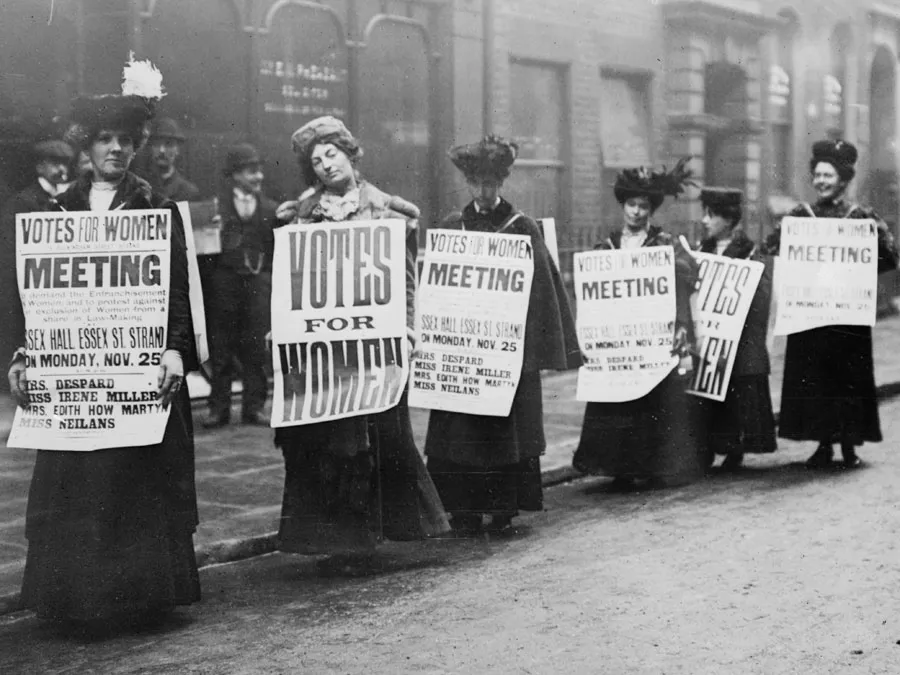International Women’s Day: Origins and Evolution
Informational article by Veda Baliga

In the cold, grim streets of Berlin, 1910, thousands of women marched, their voices rising against the stifling silence of patriarchal society. Led by Clara Zetkin, a fierce advocate for women’s rights, the protestors were not just calling for better working conditions or the right to vote. They were demanding something more profound: equality. This was no ordinary rally—it was the spark of a global movement, one that would eventually inspire the creation of International Women's Day. Many liked this idea, and with unanimous approval, they got their wish. After this decision, many countries fell into line with the idea of having a set day for recognizing women’s struggle, including Austria, Denmark, Germany, and Switzerland. International Women’s Day is a very special day to celebrate the progress made by women over many generations. Not only does this remarkable day appreciate women, but it also highlights the ongoing efforts related to addressing gender inequality. It recognizes and honors important historical landmarks in the fight for women’s rights. The 19th Amendment, allowing women to vote. The Equal Pay Act of 1963, asserting that women should be paid equally to men. The Dowry Prohibition Act of 1961 made giving, taking, or demanding dowry a punishable offense in India. The Law on Gender Equality of 2014 addressed gender inequality in multiple areas including the workplace, parental leave, political representation, etc. Women have fought hard to have an equal life, and on the very special day of March 8th, we honor women for all of their accomplishments, regardless of their race, culture, ethnicity, or background. So how did this celebration begin?
Back in 1908, there was great unrest and critical debate surrounding women’s position. Women united to fight and in places such as New York, numerous women marched on the streets demanding better rights. Events such as the tragic Triangle Fire in New York, which took the lives of 140 women, drew significant attention to employment regulations. Other events such as the Beijing Declaration and Platform for Action included the gathering of 30,000 women from 180 countries in Huairou, China raised awareness to violence against women and reproductive rights. Over time, each country took part in Women's Day, picking themes, arranging charities, organizations, events, and more. So how did March 8th get selected?
Near the start of World War 1’s campaign for peace, Russian women decided to protest the food shortages and poor living conditions. This protest was held on the last Sunday in February, which corresponds to March 8th in the Gregorian Calendar. Seeing the scale of this protest’s influence, the premier of the Soviet Union proclaimed March 8th to be Women’s Day. The date caught on, and Women’s Day has grown to become a global phenomenon, with each country commemorating the day differently. In Southern Europe, Italy hands out small mimosas, which represent female solidarity, as the chosen symbol of National Women’s Day. Heading over to Asia, China celebrates IWD on March 7th, gives their female staff a half day off, and encourages others to buy gifts for important women in their life. Over in South America, Spain has issued strikes to focus on rights for women and girls involving over 5 million people! International Women’s Day technically isn’t a federal holiday in the United States (yet), but is still greatly celebrated, and the month of March is known as “Women’s History Month”. On this day, the capital cities host rallies, conferences, and business events to advocate for Women’s Day. In South Africa, August is Women’s Month, and each year, August 9th is celebrated as National Women’s Day. This provides an opportunity to pay tribute to the hard-working women all over Africa and address important issues such as domestic violence, discrimination, harassment, equal pay, and a better education for girls. These celebrations are incredibly diverse, yet they all share a meaningful purpose.
In 1996, the United Nations adopted a theme for International Women’s Day: “Celebrating the Past, Planning for the Future”. Since then, annual themes are chosen globally. Each theme aligns with its respective year and what that year should do for women. Themes represent the need to raise awareness, encourage action, and accelerate progress in the face of an improved future for women. For the year of 2025, it is “Accelerate Action”. They picked this theme because it underlines the need to reach gender equality as soon as possible. It also commemorates the need to break down the barriers and biases that women face. Even with all of these efforts, women still face many obstacles. We are underrepresented politically and economically which have vast social implications. There is still immense potential for women waiting to be realized, and as a large component of the population, inequality holds back economic growth and development worldwide. Hurdles, from physical violence to an imbalance in unpaid work, hinders progress towards a brighter future for all women. This is why International Women’s Day remains prominent. If more countries bring awareness to these hardships, by 2030, at least half of them should be resolved. So how can you get involved in International Women’s Day?
Many countries host activism events to advocate for eliminating obstacles such as violence against women. The 16 Days of Activism against Gender Based Violence is an annual global campaign. Join iInitiatives such as UNITE, a multiyear effort to prevent and eliminate violence against girls. Even a simple act, such as spreading awareness in your school, can play a role in advancing the future of women or even supporting women-owned businesses. As we honor this upcoming day, let's commit to not only celebrating, but also continuing to fight for a world where every woman has an equal opportunity to thrive. “Women belong in all places where decisions are being made. It shouldn’t be that women are the exception.” ― Ruth Bader Ginsburg, Supreme Court Justice who fought for women’s rights.

